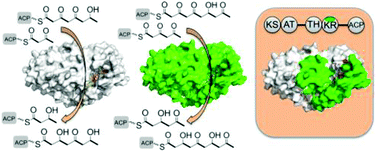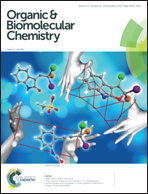Insights into the programmed ketoreduction of partially reducing polyketide synthases: stereo- and substrate-specificity of the ketoreductase domain†
Abstract
One of the hallmarks of iterative polyketide synthases (PKSs) is the programming mechanism which is essential for the generation of structurally diverse polyketide products. In partially reducing iterative PKSs (PR-PKSs), the programming mechanism is mainly dictated by the ketoreductase (KR) domain. The KR domain contributes to the programming of PR-PKSs through selective reduction of polyketide intermediates. How the KR domain achieves the selective ketoreduction remains to be fully understood. In this study, we found that the KR domain of the (R)-mellein-synthesizing PR-PKS SACE5532 functions as a B-type KR domain to generate (R)-hydroxyl functionalities. Comparative studies of the KR domains of SACE5532 and NcsB suggested that the two KR domains have distinct substrate preferences towards simple N-acetylcysteamine thioester (SNAC) substrates. We further found that the substrate preference of KRSACE5532 can be switched by swapping several motifs with KRNcsB, and that swapping of the same motifs in the full length SACE5532 resulted in a reprogramming of the PKS. Together, the results advance our understanding of the programming of iterative PR-PKSs by providing new support to the hypothesis that the programmed ketoreduction is accomplished by differential recognition of polyketide intermediates.


 Please wait while we load your content...
Please wait while we load your content...